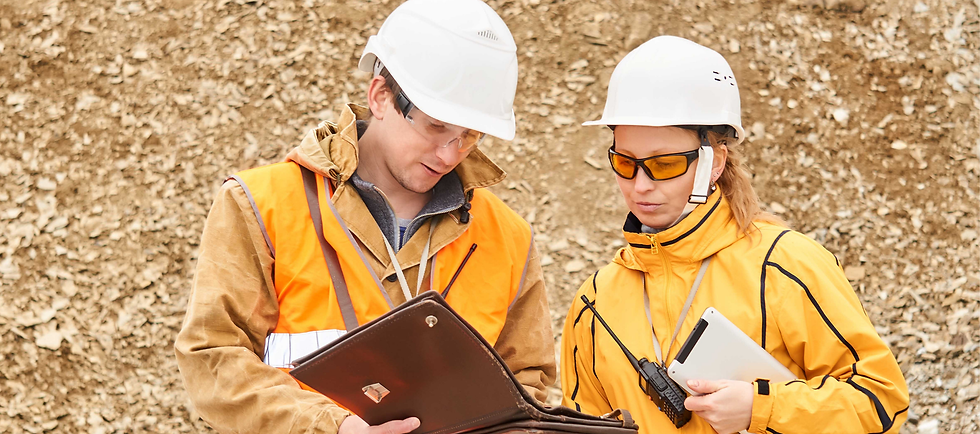How to Test for Chemicals at Work
- Shane Stewart

- Jul 17
- 2 min read
A Simple Guide

If you're concerned about chemical exposure in your workplace, you're not alone. Many workers and managers ask how to measure chemical levels, whether it's from cleaning agents, solvents, fumes, or even dust. This guide simplifies chemical testing to help you ensure safety without getting lost in technical jargon.
Why Test for Chemicals?
Chemicals can harm your health if you're exposed regularly, even at low levels. Symptoms like headaches, dizziness, skin irritation, breathing trouble, or worse, can result from hazardous chemicals in your workspace.
Regular chemical testing (also known as chemical sampling or air testing) helps you identify risks early, keep your workplace safe, and comply with health and safety regulations.
What Chemicals Should You Test For?
Common workplace chemicals you might want to test include:
Solvents (like acetone, benzene, or paint thinners)
Dust and particulate matter
Fumes from welding, painting, or machinery
Cleaning chemicals (bleach, ammonia)
Gas leaks or vapors (carbon monoxide, formaldehyde, etc.)
Before You Start: Talk to a Safety Professional
Before conducting any chemical testing, always reach out to your workplace safety or industrial hygiene (IH) professional. They’ll guide you through the correct process. If your workplace doesn’t have a designated safety expert, first bring your concerns to management so they can properly address the issue.
If you need outside help, you can always consult with Safety-Chat’s expert team here.
How Do You Test for Chemicals?
Chemical testing typically involves air sampling. Here’s the basic process:
Step 1: Identify the Chemicals of Concern
Determine what chemicals might be present based on your workplace tasks or products used.
Step 2: Use Appropriate Sampling Tools
Common methods include:
Personal air samplers: Small devices workers wear to measure exposure directly.
Area sampling devices: Monitors placed in work areas to measure general air quality.
Step 3: Collect Samples Properly
Wear the device correctly (typically near your breathing area).
Follow the recommended sampling duration (often a full work shift, around 8 hours, or short-term, typically 15 minutes).
Step 4: Send Samples to a Lab
After collecting the samples, you’ll send them to an accredited lab to identify chemical types and concentrations accurately.
Step 5: Understand the Results
The lab will provide a clear report comparing your results against established health and safety limits, such as OSHA or EPA guidelines. If your results exceed safe limits, you'll know it's time to take corrective action.
Common Terms You Might Encounter
Air quality testing
Chemical exposure monitoring
Workplace safety assessments
Employee exposure testing
Hazardous substance measurement
When Should You Test?
Testing is recommended whenever:
New chemicals or processes are introduced.
Workers report symptoms of chemical exposure.
Regulations require periodic testing.
You need documented proof of workplace safety.
Taking Action Based on Your Results
If your testing shows high chemical levels, you might need to:
Improve ventilation.
Use less hazardous chemicals.
Introduce personal protective equipment (PPE).
Implement training and safety procedures.
Getting Help With Chemical Testing
Not sure where to start? Safety professionals, often called Industrial Hygienists or Environmental Health Specialists, can guide you through the process. They help identify hazards, perform sampling correctly, and interpret your results clearly.
Need expert advice on chemical testing?Contact Safety-Chat Consulting to get professional guidance and fair pricing for your workplace safety needs.






Comments